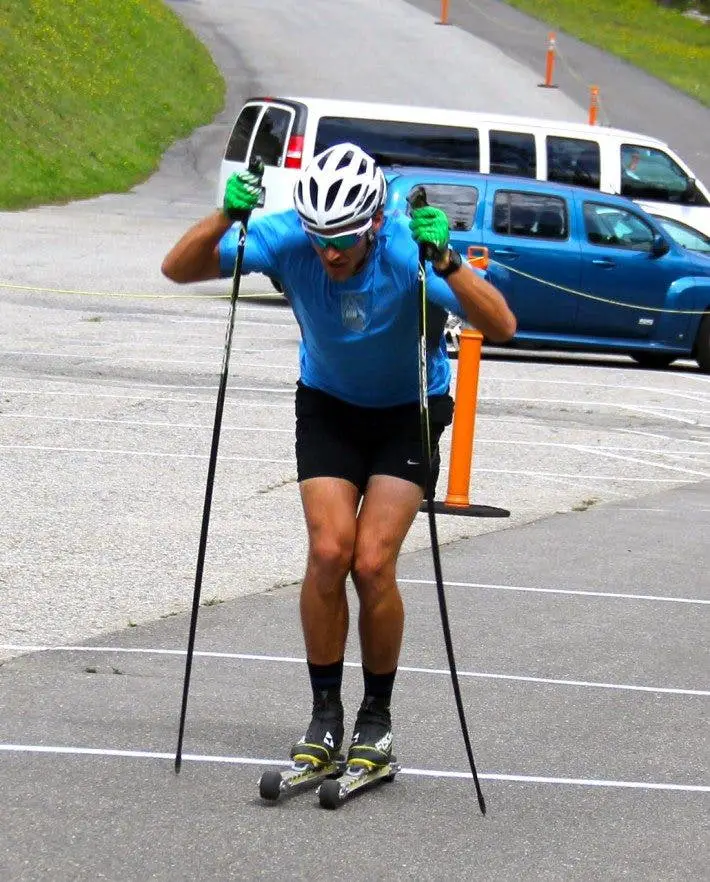Any cross-country skier knows that what they do is a sport that uses the whole body. After a competition or a cross-country ski training session, your legs will be tired, but also your arms and maybe your back and abs or many more specific muscle groups that often do not receive a specific training. But playing a sport that uses the whole body does not mean that all these muscles are contributing equally.
Cheating muscles
The arms are not as efficient at extracting oxygen during exercise. The results obtained in different studies on the double-cane movement strongly supported this existing pattern. All this despite the fact that athletes trained in endurance sports such as cross-country skiing are known to be better at extracting oxygen from the blood to the muscles, which contributes to their efficiency in these types of sports.
The ability to send more blood throughout the body with fresh oxygen helps, but the ability of the muscles to extract oxygen is also or even more important. If oxygen is not available, the muscles cannot use it and in aerobic exercise they have to use it. Oxygen is an essential element in the process that breaks down glucose into ATP. So what does this mean for skiers who only rely on their arms and not their legs to propel themselves through the snow? maybe a change in technique.
Why are the arms so inefficient?

For whatever reason, the arms are not as good at extracting oxygen as the legs. It is not a specific problem of cross-country skiing, having already been shown in studies that evaluated specific arm and leg exercises separately and on the other hand activities of the whole body.
It is also a matter of debate whether the amount of specific upper body training can help as some studies have found that this type of training increases oxygen extraction significantly, but others have found that it doesn’t make much of a difference.
For cross-country skiing, the extraction of oxygen by the arm muscles is somewhat technique dependent.
Near the lactate threshold and maximum effort the arms have a lower oxygen extraction capacity and higher lactate levels, but after exertion the accumulated lactate is eliminated from the arm muscles more quickly.
In alternate or alternate gait, the arms generate half the propulsion of the body, but the force generated by the legs is actually higher than that of the arms. In this technique when the intensity and workload increase, the strength of the arms remains almost the same, while most of the gains in speed come from the gradual increase in the force generated by the legs.
So in this technique it is perhaps not surprising that the arms do not play such an efficient role. Although they are important, the legs are what make the difference in speed. But what about the double baton technique?
Despite the fact that the upper part of the body generates almost all of the propulsion of a skier on a double pole, the extraction of oxygen by the muscles of the arms is still lower than by the muscles of the legs in this type of movement and It does not seem to change with the effectiveness of exercise (technical improvement). In addition, the oxygen extraction of the arms is on average lower during the exercise with the double pole compared to the contribution of the legs compared to some previous studies carried out in alternate gait.
Conclution
Doing more double poles in sessions to shine in our runs could put into question how upper body strength or the amount of long double pole training sessions really matter as well.
The fact of doing more hours of training does not necessarily mean better oxygen extraction by the arms, this maybe not exactly great news for runners who only think about doing long hours to reach their goals, but we can contribute some possible keys to increasing oxygen extraction by the arms. For example, giving more recovery time during each cycle of oscillation of the poles can give us an improvement in efficiency. Skiers who use their legs more in double poles (keep the body upright, extend and flex the hips, knees and ankles) are able to extract more oxygen from both the upper and lower body.
Only upper body training can’t really overcome some of the physiological limitations to make those muscles more efficient. But spend a few hours doing double batons focusing the attention on performing a good, efficient and effective technique if it can allow us physiological improvements.
References
- Stoggl, T., Bjorklund, G., and Holmberg, H.-C., 2013. Biomechanical determinants of oxygen extraction during cross country skiing. Scandinavian Journal of Medicine and Science in Sports 23: e9-e20.
- Calbet, JAL, Holmberg, H.-C., Rosdahl, H., van Hall, G., Jensen-Urstad, M., and Saltin, B., 2005. Why do arms extract less oxygen than legs during exercise? American Journal of Physiology – Regulatory, Integrative, and Comparative Physiology 289: R1448-R1458.
- Bjorklund, G., Stoggl, T., and Holmberg, HC, 2010. Biomechanically influenced differences in O2 extraction in diagonal skiing: arm versus leg. Medicine and Science in Sports and Exercise 42: 1899-1908.